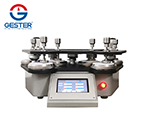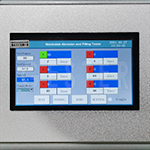 The Martindale Abrasion and Pilling Tester is a widely used instrument in the textile industry to evaluate the abrasion resistance and pilling tendency of fabrics. Proper use of this instrument is essential to ensure accurate and reliable test results. In this article, we will discuss the correct usage of the Martindale tester, including sample preparation, testing parameters, data analysis, troubleshooting, and obtaining accurate test results.
The Martindale Abrasion and Pilling Tester is a widely used instrument in the textile industry to evaluate the abrasion resistance and pilling tendency of fabrics. Proper use of this instrument is essential to ensure accurate and reliable test results. In this article, we will discuss the correct usage of the Martindale tester, including sample preparation, testing parameters, data analysis, troubleshooting, and obtaining accurate test results.
 1. Sample Preparation
1. Sample Preparation

2. Testing Parameters
The abrasion resistance test fabric tester has several testing parameters that can be adjusted according to the requirements of the test. The most common parameters are the load, the number of cycles, and the speed of the test. The standard load for testing is 9KPa, and the number of cycles is usually set to 1000. The speed of the test can be adjusted depending on the fabric type and the purpose of the test. Higher speeds are usually used for thicker and more durable fabrics.
Statistical analysis: It is important to use statistical methods to analyze the test results and ensure their accuracy. This can include calculating the mean, standard deviation, and coefficient of variation for multiple tests, and using regression analysis to examine the relationship between test parameters and test results.
Proper use of the martindale fabric abrasion test machine is critical to ensure accurate and reliable test results. By following the guidelines provided in this article, users can perform the test correctly, troubleshoot problems, and obtain accurate test results. With accurate test results, textile manufacturers can improve the quality of their products and provide better value to their customers.